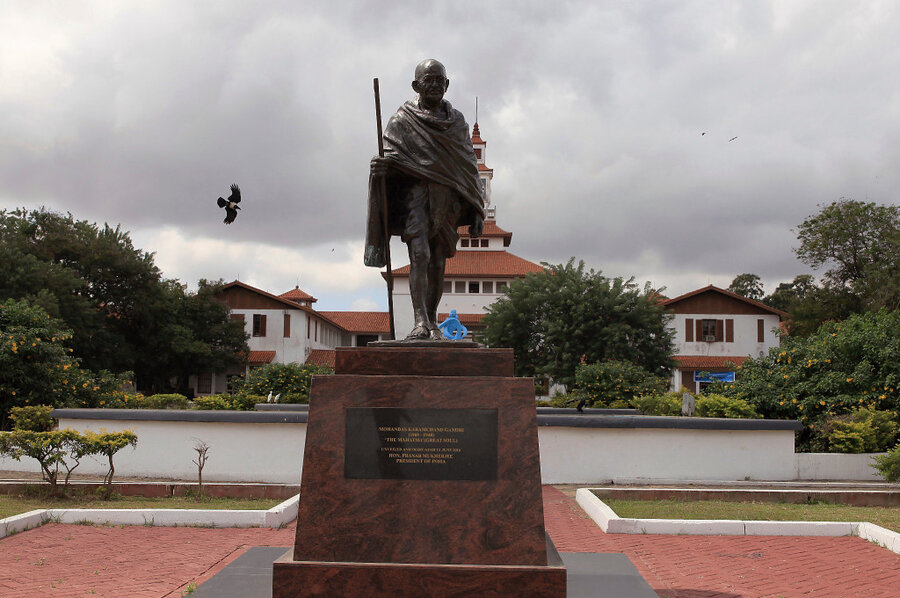Responding to racism debate, Ghanaian campus intends to move Gandhi statue
Loading...
Ghana's foreign ministry intends to remove a statue of Mohandas Gandhi from a university campus, after a group of professors and students at the University of Ghana protested the installation, claiming that the Indian civil rights leader held racist views and should not be held up as a Ghanaian hero.
More than 1,000 people have signed a petition in support of its removal. Although concerned about the bitterness unearthed by the campaign, the government has agreed to remove the statue and will move it elsewhere to protect the symbol of friendship between the two nations.
"While acknowledging that human as he was, Mahatma Gandhi may have had his flaws, we must remember that people evolve," Ghana's ministry said in a statement. "He inspired movements for civil rights and freedom across the world."
The ministry encouraged looking past racist comments to acknowledge Gandhi's "role as one of the most outstanding personalities of the last century."
Petition organizers feel the university should showcase local heroes, such as Ghana's first president Kwame Nkrumah or Yaa Asantewaa, who led the country against British rule. And the government’s response did not satisfy all those protesting the statue.
"We don't think the statue would be well received anywhere in Ghana," Obadele Kambon, one of the petition's organizers, told the Associated Press. Mr. Kambon asked the government to sent the statue back to India.
The statue was brought to the university when the Indian President Pranab Mukherjee visited the country in June. Ghana's foreign ministry is concerned that the furor may damage the two countries' relations, the AP reports.
This in not the first time that a statue of Gandhi has caused outrage on the continent. In 2003, a statue of Gandhi erected in Johannesburg, South Africa, was met with a great deal of criticism from people saying he had compared black people to India's class of untouchables, the lowest group in the traditional caste system.
The preeminent leader of the Indian independence movement, Gandhi spent two decades in South Africa, where he fought for the rights of Indians. His theory of nonviolent protest inspired the African National Congress as it fought to end apartheid, in addition to other rights movements around the globe. However, some writings quote him using racist slurs and referring to black South Africans as savages.
Others have said that the criticism against Gandhi is unwarranted, arguing that most of his questionable comments were made early in life, and that he became more accepting throughout his life.
"Gandhi devoted much of his life to fighting caste prejudice," Mridula Mukherjee, a scholar of modern Indian history at Jawaharlal University, told The Guardian. "He was a reformer not a revivalist within the Hindu religion. His effort was in keeping with his philosophy of nonviolence and bringing social transformation without creating hatred."
Material from the Associated Press and Reuters contributed to this report.






